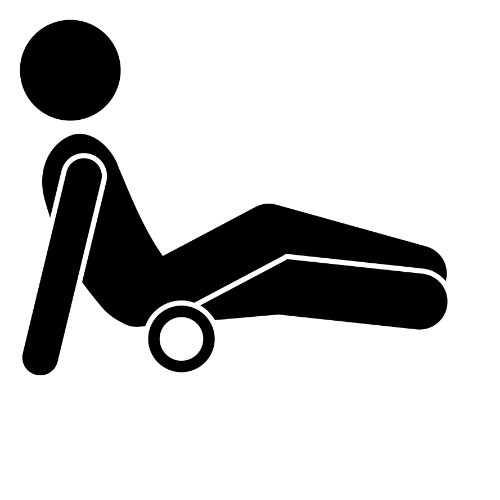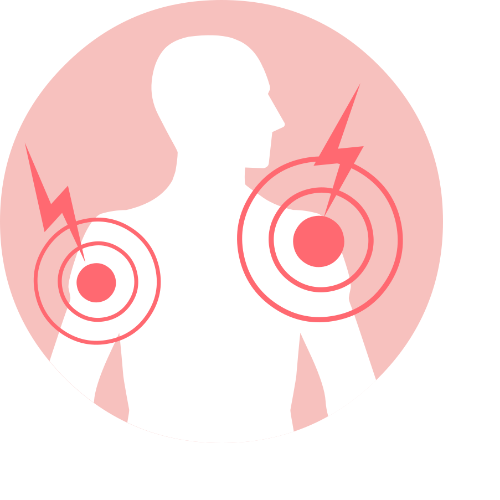
The fitness industry is awash with terms such as “Myo-fascial release” and “Trigger pointing” and this can sound intimidating and painful to the uninitiated.
Self-myofascial release (SMFR from here on) has been around for a long time. It has risen to fame more recently through the likes of Kelly Starrett aka The Supple Leopard, and any number of online/infamous coaches, clinicians, and weekend warriors alike.
Despite the plethora of info out there, many people still don’t truly understand the Why, How or What behind this technique. So my intention here is to give a brief intro and remove the barriers to starting helping yourself.
First, it’s important to understand some of the key terminology:
- Fascia – a band or sheet of connective tissue, primarily collagen, beneath the skin that attaches, stabilizes, encloses, and separates muscles and other internal organs.
- Trigger Point – a sensitive area of the body, stimulation or irritation of which causes a specific effect in another part, especially a tender area in a muscle that causes generalized musculoskeletal pain when overstimulated.
Often times what we mistake for a more serious injury are these micro traumas that can occur as a result of training or (lack thereof) and can be incredibly painful!
Often times having a few tricks up your sleeve as well as some simple and cheap tools can save you an expensive and pointless trip to the local Physiotherapist (sorry guys)! Or at the least eliminate these easily self-treatable areas from the broader picture and save you and your clinician time.
So how can we work on these areas safely and efficiently without causing further damage?
Often times you can work out these knots by applying pressure through the form of a well-placed digit and the results can be instant! It is important to note however that trigger points are often the result of a deeper underlying cause such as muscle imbalances and/or poor movement patterns (which inherently go hand in hand). If they are recurring it is important to seek the advice of a registered clinician trained to diagnose pain. That’s not a Personal Trainer in most cases!
The Treatment
Using a small round, hard ball such as a lacrosse ball locate the tender spot in the body. Once located, place the ball either above or below and position yourself so that you can apply your body weight through the ball and pass over the area (think about rolling) 8-10 times or for up to 2 minutes. Apply enough force to feel a little uncomfortable without causing true pain.
RED FLAG WARNING!!! IF YOU FEEL A BURNING SENSATION/SHOOTING PAIN YOU ARE ON A NERVE… NOT GOOD!! BACK OFF AND MOVE THE BALL TO A DIFFERENT AREA
NO BONES, NO NERVES – SOFT TISSUE ONLY
The secret to success is not the duration (amount of time) but the frequency (how often) you treat the area. I recommend 3-4 times a day for 8-10 passes to ensure minimal tissue damage and inflammation response. The beauty of this is that you can do it anywhere anytime, as long as you have your lacrosse ball with you. I keep one in my bag and take it everywhere I go!
Trigger point top 10

- Trigger points can be described as a knot in muscle tissue, rendering it unable to fully relax or further contract.
- They are caused by repetitive strain, poor posture habits, poor movement patterns, lack of movement, or a combination of all four.
- The fascia associated with the muscle will also get tight and inflexible, affecting tissues both upstream and downstream.
- Pain referral is an essential fact about trigger points and can also present as numbness or tingling when a nerve is involved.
- Joint range of motion can become limited and lead to degeneration over time.
- The three main types of trigger points are: Latent, Active, and Satellite
- Recovery of the tissue with trigger points is contingent on breaking up the locked tissue, improving circulation, and restoring mobility of the joint.
- Trigger points can be effectively addressed with self myofascial release techniques vs stretching an already aggravated muscle.
- The only way to permanently get rid of a trigger point is not train the muscle until the trigger point has resolved itself. This typically will take a few weeks of committed treatment.



